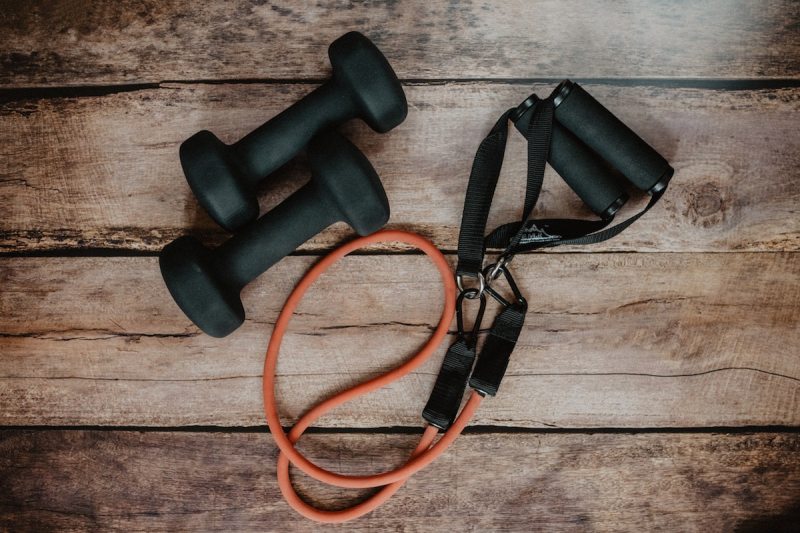Most know the health benefits of strength training, but deciding what type of resistance equipment to use can seem confusing, even seasoned fitness enthusiasts. A common question that fitness professionals get on a consistent basis is whether or not to use resistance bands or dumbbells and how each should be used for maximum effectiveness. Resistance bands and dumbbells can both help you build strength and improve your
To help us learn about the benefits and best uses of resistance bands and dumbbells, we turned to the top fitness guru, Jillian Michaels, the world-renowned personal trainer, health and
Resistance bands overview
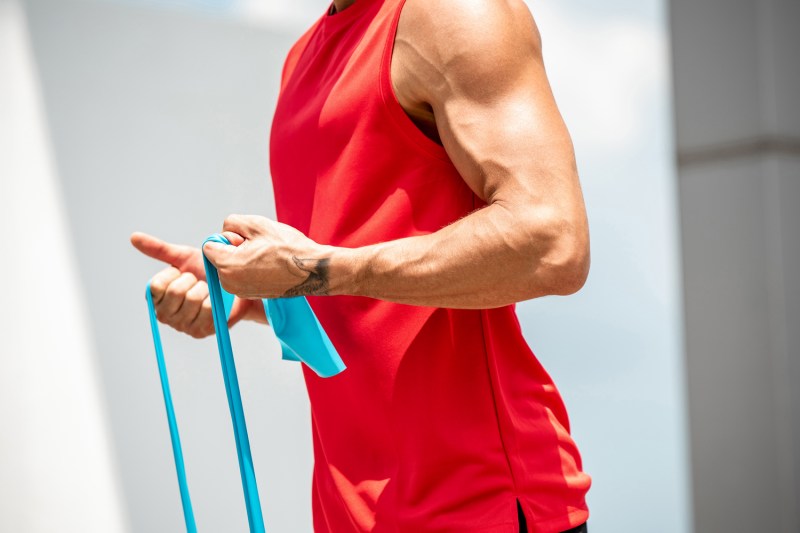
What are the benefits of using resistance bands?
Michaels is personally a fan of resistance bands and loves incorporating them into her workouts. “I love resistance bands because they are cheap, versatile, and transportable,” Michaels says. “They also allow you to train from a variety of angles that dumbbells might not necessarily allow for. For example, you can push and pull them, which makes them great for rehab work on rotator cuff injuries, shin splints, etc.”
What are the best resistance bands?
Michaels says that while there are quite a few types of resistance bands on the market these days, there are really only two types she would recommend: Bands with handles and booty bands (small circular loop bands without handles). “The ones without handles (circular booty bands) are good for lower-body exercises, and the ones with handles are better for upper body,” Michaels says. “You can be creative with both sets if you had to for a total-body workout, but if possible, I would buy a set of both.”
How should you use resistance bands in your workouts?
Michaels generously shared a few of the most effective exercises you can perform with resistance bands. For resistance bands with handles, Michaels recommends the following: “You can stand on them or loop them behind a solid piece of furniture and perform bicep curls, chest presses, chest flys, shoulder presses, shoulder raises, rows, and triceps extensions,” she says, noting that you can also use bands to add resistance to lower-body exercises like stationary lunges or squats.
“Booty bands are great for banding around the legs and doing floor work like leg lifts, pelvic thrusts, etc. They are also good for banded cardio like banded jumping jacks, side shuffles, and lateral hops,” Michaels says. “For the upper body, they can be used for reverse flys and can even add resistance to push-ups, when used correctly, by strapping them under both hands and around the upper back.”
Dumbbells overview
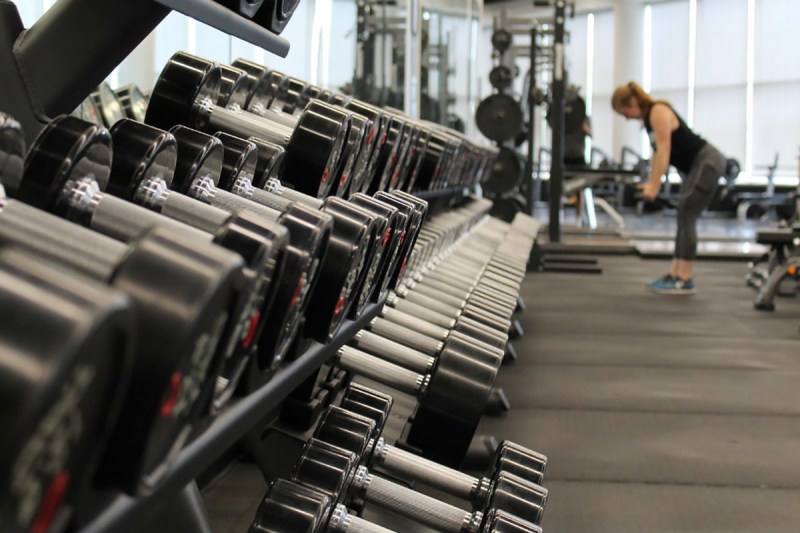
What are the benefits of using dumbbells?
“Dumbbells allow you to add resistance to any bodyweight exercise, thereby increasing its intensity and effectiveness. Dumbbells also allow you to strength train certain muscle groups that are difficult to work out using body weight only,” explains Michaels, who cites the back and biceps as good examples of muscle groups well-served by dumbbells. “Pull-ups are very difficult and most don’t have a pull-up bar at home, but being able to do a variety of dumbbell rows and biceps curls is a very accessible and effective way to train these muscle groups.”
Michaels says the benefits of using dumbbells don’t stop there. “Dumbbells increase muscle stabilization and muscle activation for greater fitness, injury prevention, and speedier results, and they allow for a greater range of motion than other popular free-weight pieces of equipment like barbells,” she says. “Dumbbells are affordable, compact, and accessible to people of all
How should you incorporate dumbbells into your workouts?
Michaels says that she almost always incorporates dumbbells into the home workouts she creates, including those in The Fitness App. “Your body is your top tool, but there are certain limitations to bodyweight training alone unless you are a consummate pro with a strong
Michaels shared a few examples of exercises you can perform with dumbbells to target those tough-to-hit back and biceps muscle groups when using bodyweight alone:
- Bent-over rows
- Upright rows
- Hammer curls
- Reverse curls
- Lateral flys
- Reverse flys
She says that dumbbells also significantly increase the range of exercises you can do for other muscle groups as well, which provides the variety and training stimulus needed to prevent fitness plateaus. “While you might be doing a host of different bodyweight exercises to hit your chest and shoulders, like triceps dips, push-ups, and down dog, [with dumbbells], you can add moves like triceps kick-backs, triceps extensions, anterior raises, overhead press, Arnold press, etc.”
Lastly, she says using dumbbells is a great way for advanced athletes to increase the intensity of bodyweight exercises by adding resistance and performing resisted compound movements like a forward or lateral lunge with a curl, a squat to overhead press, or a deadlift to an upright row. “Advanced athletes can use dumbbells to add resistance to almost any exercise, thereby increasing the intensity of their workouts. For example, adding dumbbells to lower-body exercises like squats or lunges can really up the ante,” Michaels explains.
Advantages of resistance bands over dumbbells
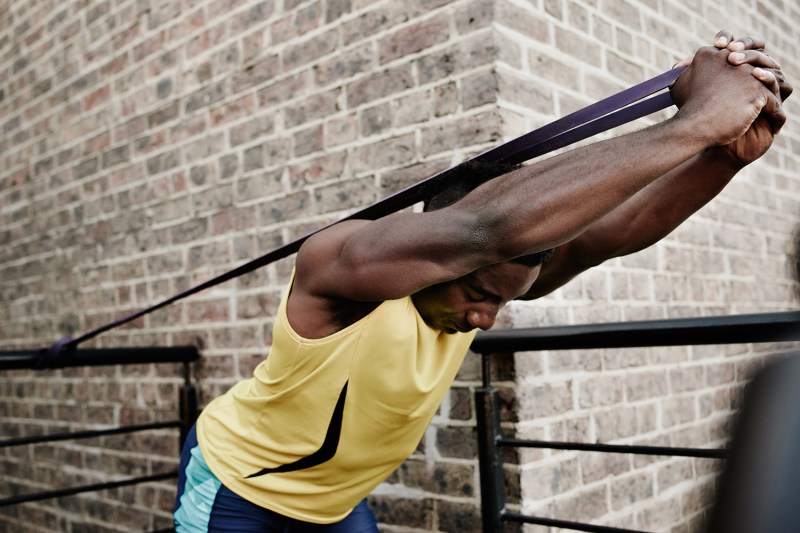
Resistance bands offer a few advantages over dumbbells. Let’s break it down here.
Resistance bands are more portable than dumbbells
Aside from your own bodyweight, there is no piece of strength training equipment as light, portable, and storable as a resistance band. Dumbbells are bulky and heavy, so if you want to travel with your workout equipment or store it out of sight, resistance bands are going to be far more convenient.
Resistance bands are cheaper than dumbbells
A full set of dumbbells will cost you several hundred dollars, and even if you decide to go with a good pair of adjustable dumbbells, you’re going to be looking at a price tag of at least $100-$200, if not significantly more. On the other hand, you can get a full set of resistance bands and handles for less than $40.
Advantages of dumbbells over resistance bands

Dumbbells offer some advantages over resistance bands. Here’s the inside scoop.
Dumbbells have distinct weights
It’s easier to know what resistance you are using with dumbbells based on the weight you are using rather than a colored band that delivers a range of different resistances depending on the degree of stretch. Therefore, you can measure your progress and have a better sense of your workout.
Dumbbells are more durable
Resistance bands are prone to snapping and will wear out and lose their resistance, but dumbbells should stand the test of time.
Dumbbells are better for certain exercises
It’s hard to do certain exercises with resistance bands. For example, using a resistance band to load a lunge or step-up can be challenging to configure.
Dumbbells can be better for building muscle
If you want to increase your muscle mass, you need to lift heavy weights. While you can load your muscles with high resistance using bands, in general, if your strength-training goal is hypertrophy, dumbbells are a more effective training tool.
Tips for buying resistance bands
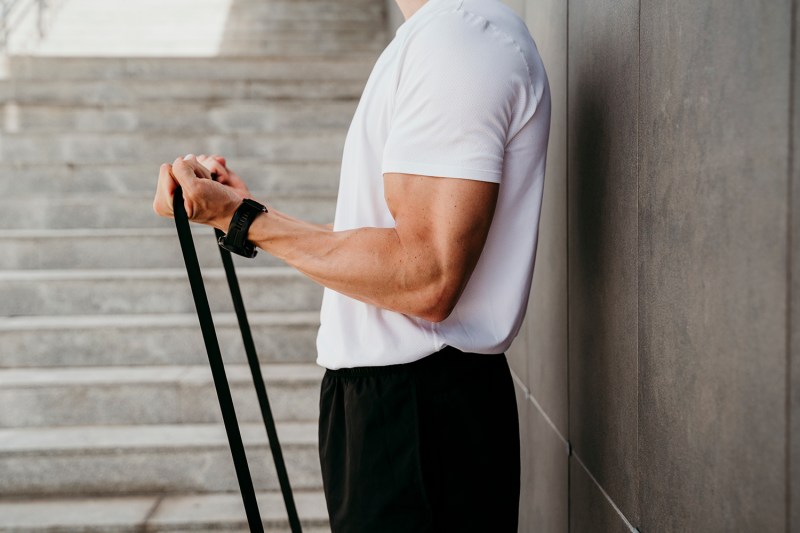
“Bands must be high quality or they are relatively useless and potentially dangerous. If they are cheaply made, they don’t provide enough solid resistance, as the material wears down and may eventually break, causing minor to significant injury,” explains Michaels. So what does this world-renowned personal trainer and fitness guru advise when it comes to buying resistance bands? “Spend the money on the higher-quality bands. If you can only buy one set of bands, then you need to think about what type of training you want to focus on and decide whether you want circular booty bands or bands with handles, but the quality is critical.”
A bit of both
At the end of the day, both offer great opportunities to help you along your fitness journey. A great option would be incorporating both into your workout programming.
